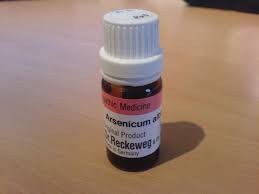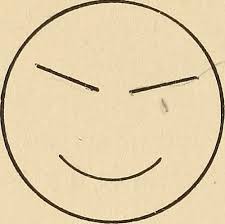Grace Stevens, M.D., Northampton, Mass.
This remedy has a place in history dating from the beginning of the Christian era. Dioscorides, a Greek medical writer of the first century, used it successfully. Plimy the Elder – a Roman writer of natural history – also of the first century claimed that it cured ulceration of the internal so. It was at that time used as an antidote to many deadly poisons. Rhasis, an Arabian physician of the tenth century, writes of it. He, as well as Dioscorides and Pliny, recommended it for the removal of the dead foetus. Sextus of the third century and Sammonicus praised it in affections of the eye and ear, notably photophobia and otitis.
About the middle of the last century Resing of New York, while traveling in Europe heard Lac Caninum praised as a remedy in throat diseases and on his return used it successfully in an epidemic of malignant diphtheria. On his recommendation Bayard, Wells and Wan studied and tried it. Resing had potentized it to the 17th centesimal and from this the higher potencies of Swan and Fincke were prepared. Swan devoted himself to the study of the remedy and published an article on its use in 1875. We are indebted to him for the careful provings (arranged by Berridge), which were published in 1888 in his (Swan’s) Materia Medica of Nosodes and Morbific Products. These provings were made from the 30th, 200th and higher potencies.
Hering gives a long list of authors who have recorded their use of the remedy, among them, Biegler, Hiller, Lippe, Payne and Wesselhoeft.
The action of Lac caninum is analogous to that of several of the animal remedies, especially Lachesis and the other snake poisons. It is especially adapted to nervous, restless, highly sensitive organisms. The symptoms are erratic, and pains fly from one part of the body to another, as is Kali-bi, Puls. And Tuberculinum; especially characteristic are pains and inflamed states that change repeatedly from one side of the body to the other. For instance, the soreness of the throat is apt to begin on the left side, then going to the fright and back again to the left. Several remedies have a sore throat beginning on one side and going to the other – as Lach. – beginning on the left and going to the right; or Lyc. – beginning on the right side and going to the left; but so far as I can ascertain, Lac caninum is the only remedy which has the repeated change.
And while we are speaking of the throat symptoms, we will add several more that are individual: Sore throats and cough are apt to begin and end with menstruation. There may be yellow or white patches in the throat, and painfully swollen submaxillary glands. The external throat is sensitive to touch, like Lachesis and the pain internally is worse for empty swallowing, like Barytacarb., Kali-carb., Lachesis and several other remedies. The constand inclmation to swallow, even though it is very painful, is like Mercury. The pain on swallowing extends to the ears like Hepar., Ign., Kali-bi, Merc., and Phyt., the mucous membrane of the throat, also the diphtheritic membrane or the surface of ulcers has a glazed, shining appearance.
The mental symptoms of the remedy include restlessness – lack of concentration, failure of memory, shown especially in mistakes in writing (again, like Lach. And Sepia). The patient is very absent-minded; makes purchases and walks away without them. (There must be many people needing the remedy!)
He is despondent, hopeless, and chronically blue, everything seems dark. This suggests Lyc. Puls. and Psor. Another mental symptom is irritability. The child cries and screams all the time especially at night – like Jalapa, Nux-v., and Psor. The grown up has attacks of rage with cursing and swearing and is generally ugly and hateful. Fear, too, comes in for its share: fear of death of being alone, of becoming insane, and of falling down stirs. This last fear reminds us of Borax.
Under, Sensorium we find an unusual symptom: A person when walking feels as if walking on air; and when lying, as if he did not touch the bed, as if his legs were floating. This sensation of gliding through the air is found also under Asarum Europaum, Calcarea arsenica, Camphor, China, Rhus-t., Spigelia, and Thuja. Lachesis has the feeling of not touching the bed. The stomach has an empty sinking sensation with a hunger that is not relieved by eating.
Lac caninum has produced and cured some interesting symptoms in the female sexual organs. The breasts are swollen and painful before and during the menstrual period, as in conium. They are so heavy that any jar causes pain and the patient instinctively holds them firmly on going up or down stairs. The remedy given to a nursing woman, who had an ulcerated throat, cured the throat but nearly dried the milk and it has proved useful in many cases where it has been necessary to stop the flow of milk. It is said also to increase or renew the flow when it has disappeared without any known cause. This is like Lac defloratum.
There are ovarian pains, alternating sides, or only one-sided. The abdomen is sensitive to pressure of the clothes and the pain is relieved by a bright red flow – two more symptoms like Lachesis. As a rule the menses are early and profuse; flowing in gushes, bright red, viscid and stringy, but we find also the symptom of scanty menses with much pain and great mental irritability.
Dr. Wm. P. Wesselhoeft reported an interesting case of a man who had been impotent for nearly ten years. As he himself did not succeed in helping the patient, he sent him to Dr. Lippe in Philadelphia, who discovered that the trouble followed an attack of diphtheria which changed from side to side of the throat, and that when he had an acute cold, it was characterized by shifting pains and change of location. Lac caninum cm cured the patient.
In the back and extremities we find many pains. The spine which is very sensitive to pressure aches in its whole length from skull to coccyx. A very intense pain across the super-sacral region extending to the right hip and sciatic nerve is worse from rest, and on beginning motion. This last accompanied a severe right-sided sore throat.
The nape of the neck is tiff and sore, with wandering pains. It aches and the patient wants to stretch the head forward to relieve the pain.
Change of location, shifting from side to side, characterizes the pains in the limbs. The remedy has proved very useful in rheumatic fever when the inflammation attacket joints first of one side and then of the other, going back and forth – from side to side and then of the other going back and forth – from side to side, and joint to joint. In a case of my own, the joints were extremely sensitive to touch and motion, but better from firm binding – not better from heat. They were red and shiny, but not much swollen, and the pain was aggravated at night. However, under Lac caninum the time of aggravation may change from night to morning or may be in the evening.
The sweat of a rheumatic-fever patient needing Lac caninum is sometimes very rank. Nichols wrote that this remedy acted best in a single dose; if repeated, it should be given at exact intervals.
Discussion
Chairman Underhill: The paper is now open for discussion.
Dr. Clark: Throat symptoms are worse at times or before menstruation. I would like to speak also of Sulphuric acid, something we don’t often use. Sensitiveness of the spine is a particular symptom for which I use Lac caninum, and often Natrum sulph.
About forty years ago I was called to see a little girl five years old, with eczema she had had since birth. It took me a year and a half or more to cure that up, during which time I was trying to get in touch with the mother. She had had a confinement some fourteen years before and a milk leg developed, to which the doctors made a considerable number of applications, but left the leg about twice the size of the other.
I studied her case very carefully and it seemed to me that Nitric acid was her remedy. I spoke to the late Dr. Perkins of Boston and I said: “I have given the high and the low, no potency in Nitric acid helped her.”
“Well,” he said, “you know we are told to give Lac Caninum if Nitric acid doesn’t do the work.” No, I didn’t know that. I went home and looked up my Lac Caninum and I said: “I have the whole business.” I gave her a dose of the 200, on Thursday night another dose, on Saturday night and Sunday morning she sent for me. She was broken out from head to foot and as she weighed about 275, it was quite some eruption. She said: “What are you going to do for that?” I said: “Nothing but let you alone.” In the course of a week the leg began to sweat and the eruption began to fade away. She would lift the leg and the water would drop from it. In two weeks she buttoned her boots for the first time in 14 years.
Now I want to give you that idea that Dr. Perkins gave me, – don’t forget it, it isn’t in the repetory. When Nitric acid seems indicated and doesn’t do the work, after hearing Dr. Stevens’ paper, I want to say that you should give Lac caninum. When you are studying Nitric acid, study Lac Caninum by all means and you will probably go from Nitric acid to Lac caninum.
Dr. Dixon: I want to go on record about getting in trouble by repeating the dose of Lac caninum. Two years ago, I think it was I gave a paper or illustrated a case with an intense aggravation from repeating a dose of Lac caninum. Perhaps I gave it too high to start with, but it gave an intense aggravation that was bothersome. I have learned to give one dose and wait, not repeat Lac caninum.
Another point that Dr. Stevens didn’t bring out in the remedy that I think is well worth remembering, is that it is useful in your enuresis cases, nocturnal enuresis, especially in those children who have grown up to adolescence and kept this habit. I have learned to always refer to Lac caninum in those cases and see if I could not get other corroborative symptoms. It is amazing how may of them you can get. And what fine work the remedy does.




